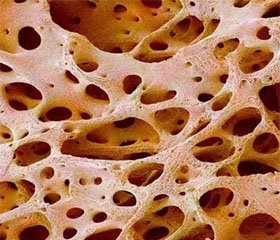Журнал «Боль. Суставы. Позвоночник» 1 (21) 2016
Вернуться к номеру
Results from monitoring studies of students bone tissue structure and function at Kharkiv region
Авторы: Frolova T.V., Okhapkina O.V., Lazurenko V.V., Siniaieva I.R. - Kharkiv National Medical University, Kharkiv, Ukraine
Рубрики: Ревматология, Травматология и ортопедия
Разделы: Медицинские форумы
Версия для печати
The article was published on p. 70
Currently, the prevalence rate of the musculo-skeletal system pathology takes one of the leading places in the structure of morbidity among children in Ukraine.
The purpose of the study was to analyze the results of osteopenia prevalence rates monitoring among children of school age of the large industrial region.
The monitoring of the structural and functional state of bone tissues among students of Kharkiv region was conducted in 2005–2015. 4200 children aged 9 to 18 were comprehensively examined.The study of structural and functional state of the bone tissues was performed on the heel bone using ultrasound densitometer «Sonost-2000».The evaluation of densitometry results was performed in full compliance with WHO guidelines.
Selective methods of mathematical statistics, together with the substantiation of representative number of observations, as well as methods of variation statistics leaning upon mean values and the error absolute (M ± m) and relative (P ± m) values, standard deviation (σ) with the assessment of authenticity following Student’s test (not less than p < 0.05), were employed during the analysis of the study findings.
In 2005 the prevalence rate of osteopenia among children in the region accounted for 29.5 ± 3.1 %, on the average,wherein I degree of osteopenia was found among (43.3 ± 5.1) %, II — (36.7 ± 2.8) %, III — (20.0 ± 2.5) % of children. It should be noted that the OP prevalence among prepubertal aged children turned out to be higher than among children of pubertal age ((24.8 ± 1.8) % and (18.2 ± ± 2.0) %, respectively; p < 0.05). No significant gender differences in diagnosed OP identified. Though, it should be mentioned that the incidence increased only slightly among girls ((26.1 ± 2.5) %, compared with boys (24.3 ± 2.7) %, p > 0.005.
Over a span of the decade the negative dynamics in the structural and functional state of bone tissue was observed. Thus, in 2015, (41,2 ± 3,6) % of children were diagnosed with OP. It should be mentioned that the OP structure severity has changed: I degree osteopenia incidence constituted (32.8 ± 3.8) %, II — (46.1 ± 4.1) %, III — (21.1 ± ± 2.5) % of cases.
Thus, what is being observed is thei ncrease in the incidence of moderate OP, while there is the decrease in mild OP, while the III degree of OP prevalence remains at the same level as in 2005. Attention is also attracted by the fact of the significant increase in cases of OP among children of pubertal age, as opposed to prepubertal aged children ((35.6 ± 4.7) % and (23.9 ± 2.3) %, respectively; p < 0.05). In addition, almost 68 % of all the OP cases among students who live in the Kharkiv region constitute II degree of OP.
In 2015, no significant differences in the incidence of OP depending on the gender of the child have been noted. However, still there is a slightly increased incidence of OP among girls against boys ((27.3 ± 2.9) % and (25.1 ± 2.5) %, respectively, p > 0.005).
As for the OP distribution, in 2005 there prevailed II degree of osteopenia, which is associated with chronic diseases of the gastrointestinal tract and kidneys. While in 2015 the share of I and II degree of OP was almost on the same level. As for the I degree of OP risk factors, in 2015 the key factor contributing to the development of OP turned out to be malnutrition with excessive consumption of sweet carbonated beverages, snacks and fast food; deterioration of the ecological environment and sedentary lifestyle.
Thus, the analysis of OP prevalence monitoring among school children showed a significant increase in the incidence of I degree of OP, which clearly shows the deterioration in the quality of nutrition and lifestyle among modern students, i.e those factors that are subject to correction requiring minimum costs incurred by families themselves, as well as the state on the whole.

